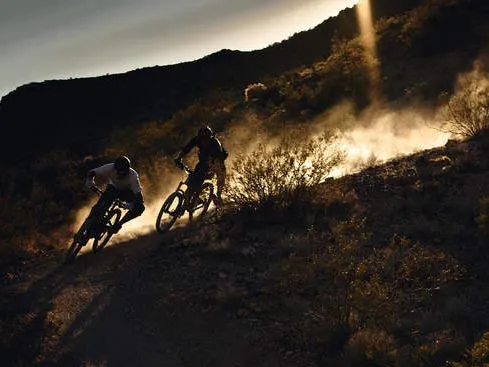Whether we’re overweight weekend warriors, skinny scared schoolkids or world champions, we’ve all had downers. Times when you can only see the crash, not the clean line. Days when you’re the only one who seems to be hurting on the hills. Weeks when you’re just a disappointment to your bike, a patience-stretching pain in the ass to your mates and sticking everything on eBay seems the best option.
From here on in though, it’s all about the ‘can do’. Breaking down the mental barriers, reinforcing the positive, eliminating the negative and letting you be the far better rider you actually are. We’ve got everyone from elite riders to sports psychology experts and riders just like you to help you step it up.
Prep talk
The old 'fail to prepare, prepare to fail' cliché is big on cheese but big on truth too. Here’s how to get bike, body and mind in a positive mood.
Nothing provides a better excuse to someone whose confidence is faltering than a bike that doesn’t work. We’ve all heard – and possibly used – the classic kit excuses. “I would do it, but these aren’t the right tyres/ brakes/forks.” The truth is, this is normally a bunch of tosh.
If there’s something that definitely needs fixing or might break, get it done/fixed, but otherwise just make the most of what you’ve got already.
Can’t afford winter tyres? Just see less grip as a challenge and a great way to learn to increase your traction stretching skills. Bike weighs a tonne? Well, you’ll be getting fitter and faster than anyone else. Less suspension than your mates? See their faces drop when you’ve learned to ride smooth enough to still be on their tail at the bottom of the hill. Learn to see the positive side of your lowly setup.
That said, adding a few PSI to tyres and unbolting any surplus crap will immediately make your bike faster on climbs/smooth sections. In contrast, dropping the saddle and losing a few PSI from forks and tyres will generally give you a lot more control in technical situations.

Stealing skill
The fastest way to get more speed and skill is to steal it by following and copying better riders. Get on the tail of a talented rider and you’ll be astonished by how they use the trail, their bodies and their bike, and that skill will soon rub off on you.
Obviously by riding with faster, better riders you’ll inevitably be eating a lot of dust, dirt and humble pie. But just by having the guts to tag along for as long as you can, you’re making a massive commitment to stepping up your riding.
Even if you only hang onto them for a couple of moves you’ll suddenly realise how speed increases smoothness, how much smaller rocks seem when you stay off the brakes, how you can use the trail to berm, pump and pop yourself faster, and how pushing yourself to the limit each climb soon pushes your fitness to totally new levels. How much punishment your body can really handle before you pop will come as a surprise to you.
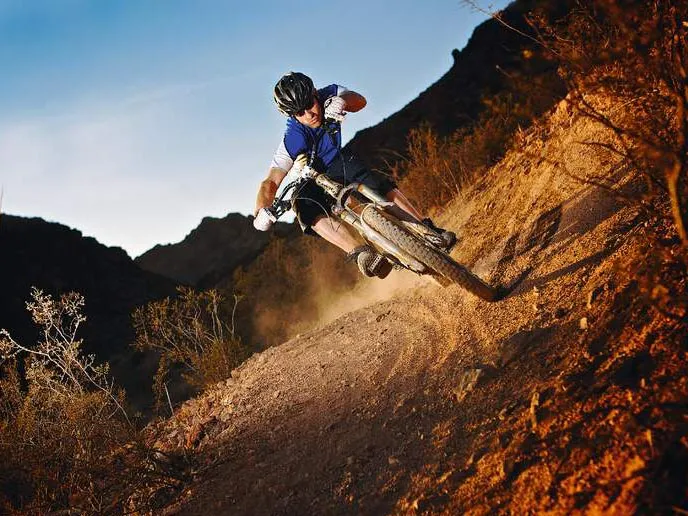
Breathe and believe
The one thing that always spells disaster is doubt – a worry that you might not make the gap or that the rider alongside you is fitter. Suddenly you tense up and your breathing rate increases. Brakes are grabbed too hard, rocks become hypnotic and you’re gasping for breath while the guy alongside you is still talking.
Whenever you step up your riding you’re increasing worry potential, but master your nerves and it needn’t be a problem. First, be realistic about what you can achieve. Even the most radical riders won’t pull a stunt unless they’re at least 99 percent sure of nailing it. To be certain, rehearse the situation in as much detail as possible. Split it down into sections that you know you can do and those that are worrying.
Walk it through, push the bike through, watch other riders do it. If you have any serious doubts, then don’t do it. Practise the skill or fitness element you’re unsure of in a more forgiving environment until you’re sure and then come back more confident.
Once you’re committed to the move, breathing deeply and steadily makes a massive difference to your overall calm, both consciously and subconsciously. On technical sections it helps your body stay fluid and relaxed. When you’re climbing or competing it helps get more oxygen into your blood for efficient power and it helps lower your heartrate too.
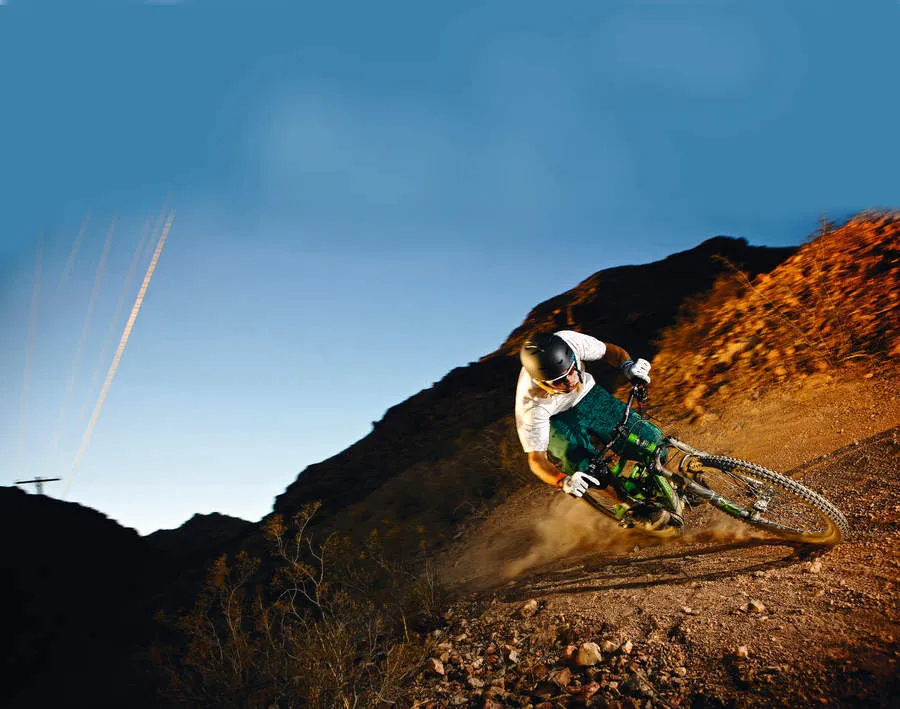
Imagining the best
That’s right. ‘Imagine the best’ – not the far more common ‘expect the worst’. It’s this ‘imagining the worst’ that makes North Shore so scary to many riders. You can ride a white line or kerb on the side of the road no problem, yet you freeze, wobble and fall off a 2ft wide ladder every time you attempt it.
Unfortunately the entirely rational fear of falling off, and the imagined injuries and their consequences, has overcome the equally rational belief that you could just roll straight along it. But if you concentrate on success rather than the potential problems, you’re far more likely to succeed.
Martin Lancaster from www.mind-on-sport.com puts it into context. “If you think, ‘I’m not going to hit that tree’ you’ve already made ‘that tree’ the problem,” he says. “Instead think ‘I’m going to ride through that gap’. It sounds a small change but it’s a massive difference in state of mind and your chance of success.”
Talking yourself into a positive state is the vital key to mastering these confidence vs consequence battles and unlocking your ‘hidden’ talent. That’s where the next stage comes in.

Step it up some more
Psychologists will tell you that how you feel on different days and even different parts of the same day is all about ego states. That’s nothing to do with arrogance or showing off, just the different emotional presets we all have installed in our psyche. What you need to learn is how to bring your most positive state into action whenever you need it.
Sports psychology and sport hypnosis is a massive growth area. After all, the whole ‘in the zone’ state of top athletes is a form of trance or state of ‘flow’, where all non-essential information and negative thoughts are screened out.
Focus on what you want to achieve. Focus on yourself, not other riders or distractions around you. If it helps, have a mental ritual, song or statement phrase as your ideal intro. When you’re in the zone and its all flowing smoothly, remember how everything feels so you can rebuild the zone at any time.
Even when it’s not going to plan, stay positive. As Martin Lancaster says, “There’s no such thing as failure, only results and feedback. Feedback will help you learn, correct and improve, because failure is your very own, guaranteed ego crusher.”
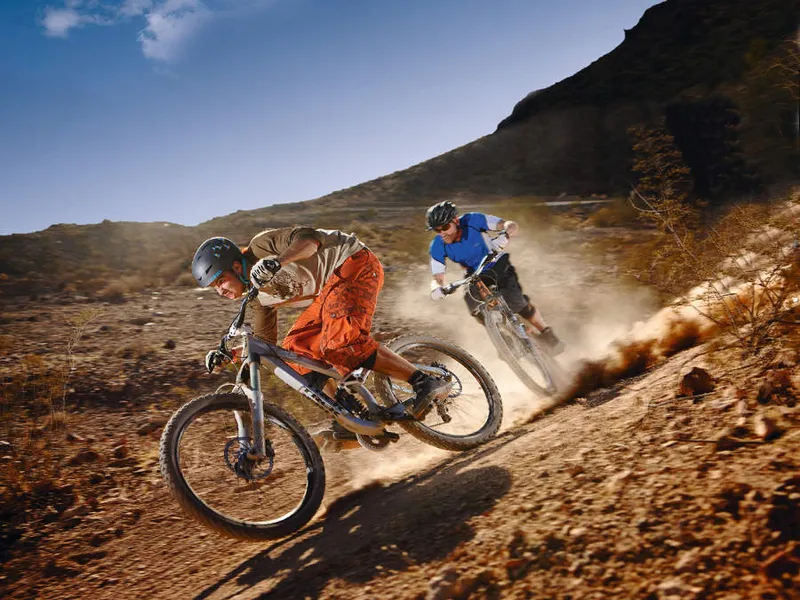
Focus on the good stuff
There’s a whole world of psychological, physiological, fitness and skill issues expanding out from the basics we’ve talked about here. Happily, all you have to remember is that relaxed self-belief and a positive attitude will improve every riding situation.
We’re not saying you won’t still have dumb days or hills won’t be hard anymore. However, if you concentrate on what you do achieve (not what you don’t) on every ride then you’ll soon be riding more fluidly, faster and having a lot more fun than you ever did before.
Martin sums this up eloquently: “The mind has control over all the factors our performances depend on. The more you learn to use your mind, the faster you can step up your riding to the next level.”
What the experts say
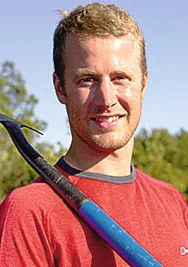
Rob Jarman, former national downhill coach, now stuntman and all-round mountain bike Stig: “Nothing gives me more motivation to get out on my bike than downhill World Cup race coverage on YouTube or Freecaster. To see Sam Hill drifting it or even Shaun Palmer ripping up a '90s Les Gets berm gets my adrenalin burning every time.”
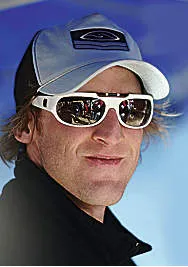
Steve Peat, multiple national and World Cup downhill champion: “I would have to say preparation is key. If you do the work in the off-season to prepare your body and mind it’s one less thing to think about on the track.
"Going through the track over and over, knowing your lines down to the finest pebble and root, setting braking points – all this will help you raise the game when the flag drops.”
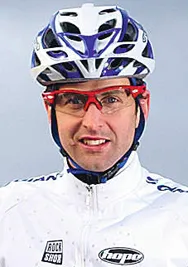
Oli BeckIngsale, multiple Olympian and national cross-country champ: “I’ve found that really hammering a short tech circuit has been good for me the last year. About 10mins long with some short steep climbs, some scary stuff and some singletrack, then doing a flat-out or laps, then chill and go again. Hitting stuff faster than race pace and breathing hard takes things up a notch physically and technically... plus it’s good fun.”
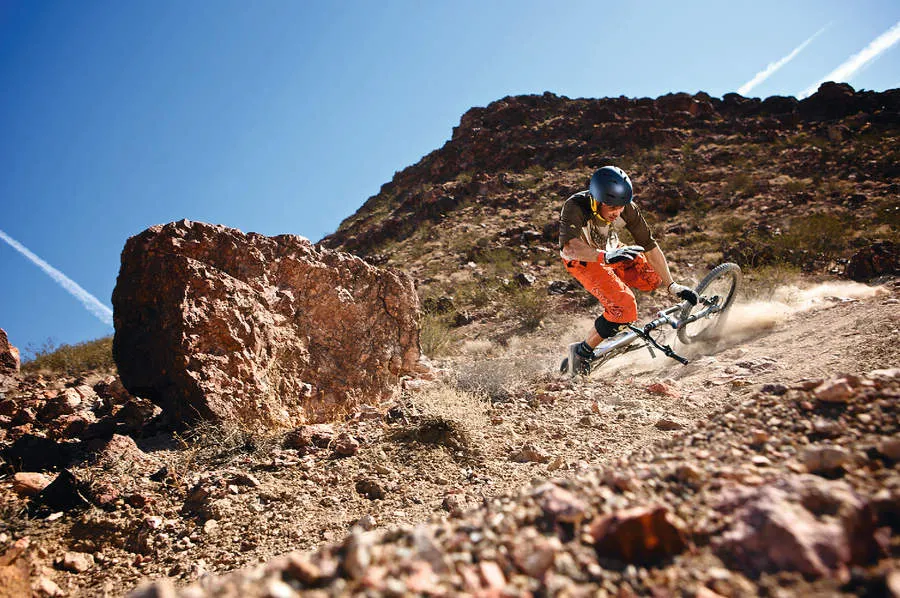
Skills shortcuts: Quick fixes to raise your game
You’ll get more skilful much faster by working on specific areas whenever you can grab a bike and a helmet for a quick play. There are loads of technique videos on our BikeRadar media player, but these are our favourite five-minute skill sharpeners.
Cornering: Find a can and ride round it tighter and faster until your tyres slide. This is guaranteed to improve your cornering no end.
Trackstand: Ride as slowly as you possibly can, rocking between rear brake and pedal when you stop to become a trials god or just a traffic light hero.
Drop-offs:It’s all about getting your weight back. If your back wheel lands first off a kerb, you can be sure you’ll be fine off a 4ft drop.
Steps: Ignore your head and braking urges. As far as your bike is concerned it’s just a steep slope with a buzzing noise.
Get better without your bike: Easy tricks to improve your fitness
Even with an hour-and-a-half midweek and three hours at the weekend you’re off bike for 96 percent of the average waking week. Don’t think that means you can’t improve though. here are a few extremely simple ways to build fitness without your bike.
Take the stairs: This leg working cliché really does work. Also try riding to work, getting off the bus one stop from your destination, and so on.
Stand up: Want to really improve core strength and balance? Read the rest of this article, wait for the photocopier or do the washing up on one leg.
Bike on the brain: Even when you’re walking, think like you’re riding. Just thinking fires the same neural pathways as doing, so hop up kerbs, lean back into drops, singletrack down corridors and take the cleanest line down steps. Just try not to stick your tongue out or make squeaky brake noises too much.

Fitness shortcuts: Much pain, mucho gain
Riding your bike more and riding harder will make you fitter in the long run. Not as fast as these pro fitness techniques though. Try them out for a quick turnaround in fitness levels. [Danger: May cause serious pain and extremely strong language. Always consult your GP before intense exercise if you’re fat or unfit.]
Nitrous injection: Put a rocket in your sprint in half an hour with these intensely evil intervals. Warm up progressively for 10 minutes. Then sprint flat out for 30 seconds and rest 30 seconds, three to five times. Now rest for five minutes. Then repeat the sprints three to five times. Afterwards, wobble home slowly. This one’s ideal for burning off that excess fat.
Learn the burn: Your muscles burn when you push harder than you can breathe. Learn to surf maximum efficient power with this ‘minutes never felt longer’ routine.
Leg-melter: Warm up progressively for 10 minutes. Increase the speed-to-muscle burning point and then hold on the limit for five minutes. Now cruise for a minute. Repeat this two to five times. Then crawl home and wish you had a downstairs loo for the next few days.
Handlebar wisdom
You’ll probably look a pillock with Post-It notes on your handlebars, but keep these positive cues in your head at all times.
- “Can do will. Can’t do won’t.”
- “Look at the solution, not the problem.”
- “Your bike doesn’t want to crash, so relax and let it roll.”
- “Focus as far down the trail as possible.”
- “Everybody hurts, but only the weak give up.”
- “It could be worse, you could be at work.”
